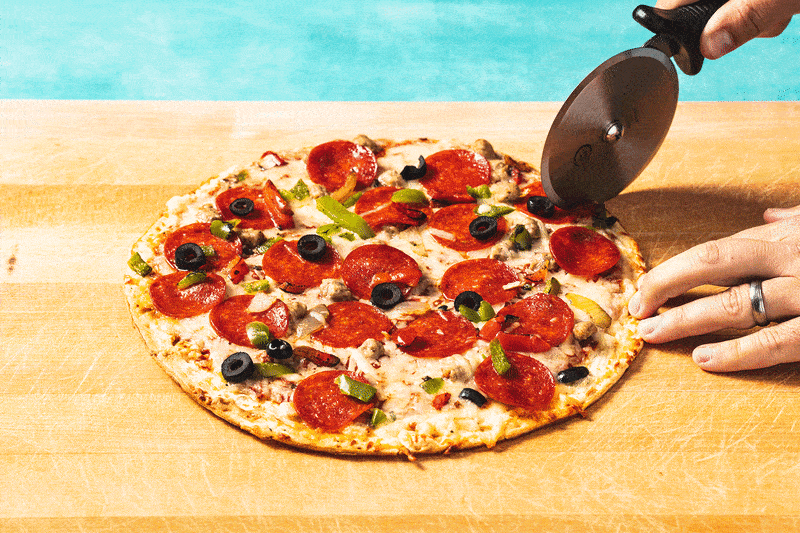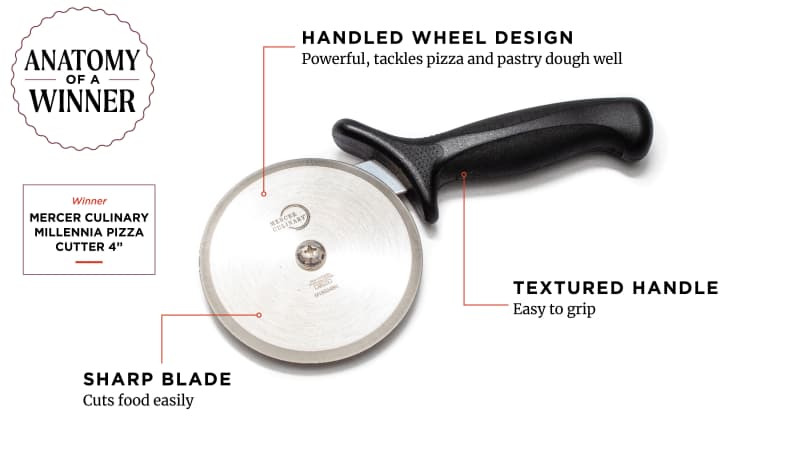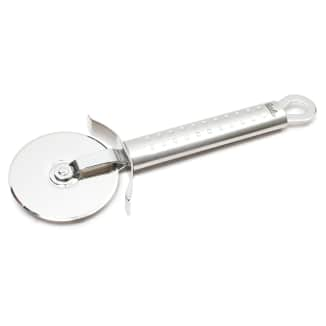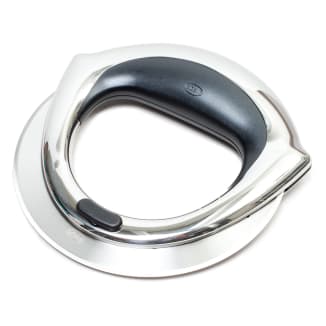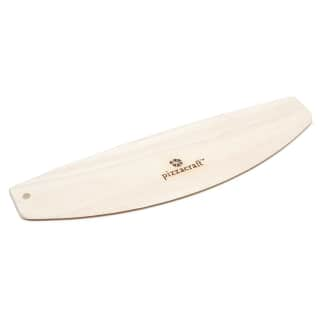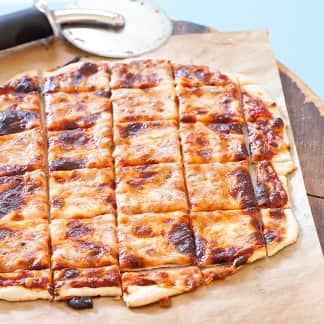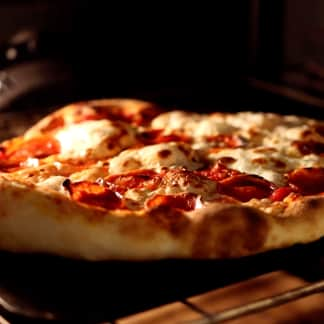The two oddballs worked surprisingly well—the pie server–shaped cutter and the scissors were both sharp and easy to use. But the pie server didn’t have a good place to brace a second hand when we needed more force, so we docked points. Testers were surprised by how much they liked the scissors, which sliced through even deep-dish pizza and heavy, wet toppings with ease (we tried our regular kitchen shears on different styles of pizza, too, but their blades were too short and gummed up easily). But there was a problem with both the scissors and the pie-server cutter: Testers had to make a series of shorter cuts instead of one long continuous slice, which was harder and turned out wonky slices. These shorter, uneven cuts also meant that these models wouldn’t work for evenly slicing pastry or pasta dough, which we sometimes use pizza wheels for. As a result, these models were less versatile.
Next, we looked at the straight blade cutter. At just longer than a foot, it was the best of the long blades and had a nice grippy handle. But while it was the sharpest of the straight blades we tried, it was still far too dull. To get through the crust, testers had to rock it back and forth again and again, battering the toppings, cheese, sauce, and crust into a messy pulp.
The hand wheel was disappointing, too. Its circular blade was housed inside a small plastic case that you hold onto while cutting. It worked well with thin-crust pizza, but when we tried it on bulkier toppings and doughy crust, its wheel swept food inside the case and testers had to disassemble it to clean it out, a dicey task with a wet, soapy blade.
But a bit more cleanup might be worthwhile if it worked better; we figured that a hand wheel might be more powerful because your hands are directly over the wheel, so you apply your force right onto it instead of first squeezing a handle. But testers reported the opposite—they felt weaker when using the hand wheels. To understand why, we spoke to Jack Dennerlein, professor of ergonomics and safety at Northeastern and Harvard Universities. He said that when our palms were draped over the case, we couldn’t wrap our fingers around it in a strong way as we could with a handle. “The muscles that flex fingers to hold a handle are bigger, hence stronger,” Dennerlein said. “So the traditional handled cutter is much stronger.”
He also brought up another point about the hand wheels—visibility. A rolling pizza cutter requires two actions: creation of a downward force and movement across the pizza. To do the latter efficiently, you have to see where you’re going, and each hand wheel’s blade was hidden by its hood or by the user’s hand.
All four of the other styles had flaws, so we turned back to the classic handled wheels. We evaluated the two best classic wheels on thicker crusts and heavy toppings and found one to be impossible to clean—it had a fixed case that covered half its blade and trapped toppings but didn’t come apart to clean—a recipe for gross buildup.


